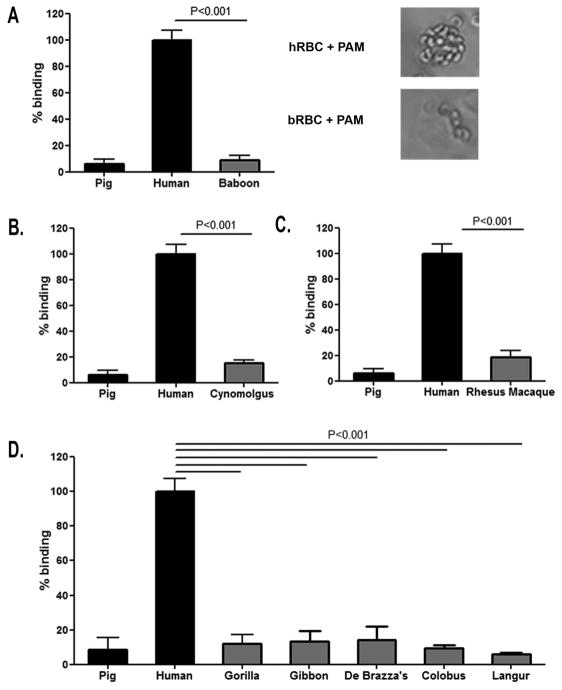Figure 2.
Porcine macrophage binding to xenogeneic erythrocytes obtained from nonhuman primates most commonly used in xenotransplantation pre-clinical studies. (A) The ability of porcine macrophages to recognize erythrocytes from baboons was determined using a quantitative colorimetric erythrocyte rosetting assay. Baboon erythrocytes binding was significantly less than human erythrocyte binding (P<0.001). Phase contrast microscopy results further supported the findings obtained with the quantitative rosetting assay. Binding of Cynomolgus monkey (B) and Rhesus macaque erythrocytes (C) to porcine macrophages was quantified relative to human erythrocyte binding. Binding of erythrocytes from Cynomolgus monkeys and Rhesus macaques was significantly less than human erythrocyte binding (P<0.001). Data are representative of three independent experiments performed using human positive control erythrocytes from three different individuals. (D) The ability of porcine macrophages to recognize erythrocytes from various nonhuman primates was quantified. Binding of erythrocytes from all five nonhuman primate species tested was significantly less than that of human erythrocyte binding (P<0.001). Three independent experiments were done using erythrocytes from three individuals for the human positive control and nonhuman primate erythrocytes from single animals.

